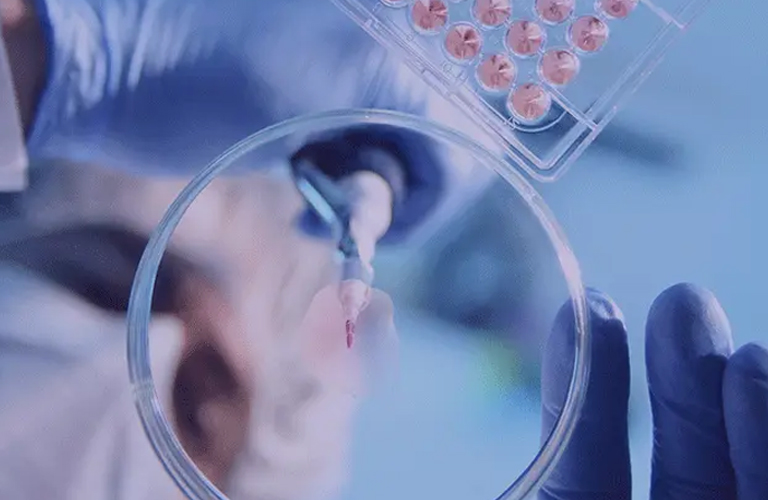Personalised medicine in Parkinson’s diesease: the rold of the gut-brain axis by Teus Van Laar
Philip, thanks for introducing me and thanks for inviting me to Green Valley because this is a very interesting topic. We are already talking about personalized medicine in Parkinson's for years. And what is the role of the gut-brain axis on this topic?
First of all, I want to show you two faces of Parkinson's, and many of you will be familiar with that. These are both patients at their first visit into our clinic. And we start with the right side, a man of 70, who just had one year of some tremor. For the rest, there was no problem. He had no other symptoms than only some tremor. And that was it. A resting tremor unilaterally, cognitively unimpaired, no constipation, no REM sleep behavior disorder. Nothing.
The second one is a completely different story. He's 20 years younger, he's 50, and he had complaints for being… becoming more slowly. Akinetic-rigid subtype, very severe. But this was the first visit to our clinic. And so he was thought to have a dystonia first. And finally, he proved to have a clear Parkinson's disease syndrome.
As you can see, it's not one disease. So many colleagues have been trying to subtype Parkinson's because it's not one disease. The first thing I showed you was the motor subtyping – tremor dominant versus PIGD, so postural imbalance and gait disorders.
Now we have the possibility to create some prodromal cohorts in the world and there is a prodromal subtyping as well, mainly based on the predictive value of REM sleep behavior disorder, which is a very indicative symptom because over 80 percent gets Parkinson's in 5 to 10 years. So that's the prodromal way to subtype.
In the meantime, we also have some genetic subtyping with the monogenetic inheritance with all the PARK genes, but also with the 90 variants we have now available where we can subtype them. For instance, the most important one recently studied also in the Netherlands, with a strikingly 15 percent of patients having a GBA mutation, which is a different way to look at subtyping of Parkinson's disease with very likely a different approach for therapy.
We can also look at the different pathophysiological pathways, mitochondrial, lysosomal like in the GBA, the iron increase of synuclein deposition. There are many ways to do that. And most of you who are familiar with the Parkinson fields know there is heavy debates based on two subtypes, the body- and brain-first subtype. And I will share some more thoughts about that.
If we put all these things together, there was a nice review recently of Daniela Berg in Nature Reviews, who tried to combine these subtyping. And as you can see here, this, taking into consideration to age, the onset, the dominance of the motor phenotype, the non-motor burden, cognitive burden and the speed of progression.
And let me see if I can get back. As you can see, there is actually two phenotypes which you can perhaps differentiate and combine a few things. An RBD negative one, which is mostly a GBA non-mutant and is sometimes LRRK-2 mutant. Young onset, dominant phenotype is tremor dominant, very low non-motor burden, very low cognitive burden, so relatively mild phenotype with a slow progression.
And on the other hand, there's a completely different phenotype which you can call even them “diffuse malignant subtypes” with the fast progression, a high cognitive burden, a high non-motor burden already early in the disease, a lot of autonomic disturbances, depression, balance disorders, had PIGD subtype and an older age of onset. And many of them are GBA positive, and almost none of them are LRRK positive. So that's completely different with very intriguingly, these are the ones who have mostly a RBD symptomatology in the prodromal phase.
And this is more in a graph. Put together all these phenomena together because there is a lot of imaging evidence that the brain- and body-first subtype exist. Starting with the body-first, which has the highest burden and the highest proof of a separate subtype, starting with, of course, perhaps constipation for a long time. Still unclear what's the role of constipation here, but very likely starting in the gut with early alpha-synuclein deposition in the gut wall spreading into the system for many ways… I will come to that later… and at least via the vagal route as is known and via the sympathetic route, as you can see, the coeliac ganglia, the stellate ganglia to the heart.
So very early in the disease, it's proven these people have no innervation, sympathetic innervation left of the heart. Later on, they get to the dorsal nucleus of the vagus nerve. A little bit more later, they get neuro melanin loss, and the locus coeruleus is typically associated with the REM sleep behavior disorder pathology. And even at the end, there is also loss of the substantia nigra. And the latest of all, there is also amygdala involvement.
As you can see, the second subtype, which is called the brain-first, which has not the strong evidence of imaging support as the body-first subtype has, but there is strong evidence that it may start in the amygdala. And as you know, the amygdala is heavily connected with the olfactory nerve. So what does it mean? Is this a separate entry route, not via the gut, but via the olfactory nerve? We don't know yet, because people with the body-first subtype also have olfactory dysfunction and may be also quite early into the disease course. But clearly, they have early in the disease a severe loss of nigra neurones already, and then later on the route, vice versa, so later on, locus coeruleus, even later, dorsal vagal and heart denervation. So clearly separate profiles as far as we knew from the imaging evidence.
Here's some pictures that show the differences. In the repetitive REM sleep behavioral people who already show a clear, as you can see here, there is no innervation… there is no innervation of the heart left where you see a clear, normal, sympathetic innervation with the MIBG scan.
And the other thing around here you have FDOPA, which is clearly in the RBD. Patients actually normal and already really pathologically involved in the H&Y (Hoehn and Yahr) 1 without any RBD symptoms. So a clear differentiation…
It has also shown in the animal model where you can see the spreading. If you put alpha-synuclein into the duodenum of rats, you see the spreading via the sympathetic route, as can be seen by the arrows here, and you see the vagal spreading to the dorsal motor nucleus in the other way. So this is the vagal route, and this is the sympathetic route for the coeliac ganglia and stellate ganglia, as shown also in humans. So the animal model actually predicts quite well the possibility of spreading. And it is known for many experiments that alpha-synuclein is able to spread retrograde via the vagal nerve and also via the sympathetic system.
A very intriguing data set is coming from Sweden, where they looked into the patients who had in the last century all the truncal vagotomies for their stomach ulcers and the gastric ulcers because there were no PPMI at that time, so people were treated with truncal vagotomy. And it's very striking that, as you can see here in the left graph, that the risk of getting Parkinson's in these patients with partial or at least with a truncal… a complete vagotomy was reduced with 50 percent. So apparently this vagal route has a very important impact on the spreading of alpha-synuclein from the gut, which is a very strong argument for this hypothesis.
Perhaps the most striking experiment was about alpha-synuclein overexpressed mouse, and there's always, of course, as clinician, there is always a problem: that's a mouse. But the experiment itself was brilliant I would say. What they did is they had alpha-synuclein overexpressed mouse, and the basis of this experiment was the discussion – what is the most important causative factor in Parkinson's disease. Is that the alpha-synuclein deposition? Or is that something which is related to the alpha-synuclein deposition?
And for that reason, they looked first just at mice with an overexpressed alpha-synuclein gene, and these mice were slightly bradykinetic, slightly rigid. They moved a bit less, but very mild parkinsonian symptoms.
Then they cleaned the gut completely with antibiotics and with laxatives and everything. So the complete microbiome influence was removed and the same alpha-synuclein overexpression existed, and all the parkinsonian symptoms disappeared… gone.
Then they put microbiota of PD patients in the same mouse with the same alpha-synuclein overexpression and then all of a sudden, two stars, so very severe parkinsonian symptoms recurred. So clearly, the alpha-synuclein plays a role, but apparently the influence of the gut microbiota and perhaps the inflammatory responses related to that are key in the whole process where alpha-synuclein might be a co-factor and perhaps a very important co-factor.
We have written several opinions about this type of thinking about the gut in Parkinson's, which you can read in the supplement of the Journal of Parkinson's Disease, which I had the pleasure to edit.
And one of the studies looked at the different microbiome abundances in PD. And as you can see, the lines have moved a little bit, but at least the prevotellaceae and the lachnospiraceae are bacteria, which produce small-chain (should be short-chain) fatty acids. And these SCFAs are very important in anti-inflammatory processing. So if you have less abundances of these bacteria, that might mean you get a kind of pro-inflammatory state, and there are a few other examples, but especially the lachnospiraceae and the prevotellaceae are the ones… are the genuses which are reduced, and we have recently proven that in our own de novo cohorts already in de novo PD patients, we have a significant difference in microbiota composition, with the same decrease in abundances as shown here. So very important information. So the microbiota change already early in the disease in a more pro-inflammatory state.
And that may lead to different secondary processes. If you have an inflammatory state like we know from the inflammatory bowel disease, which, by the way, have an increased risk of Parkinson's, then there might also be the consequence of a more permeable gut wall. So the colonic wall is more permeable, so the so-called leaky gut. And we know quite well which factors play a role in that, and it looks like that multiple inflammatory factors play a role in the leakiness, which just promotes the transport from all kinds of inflammatory factors, but also perhaps of alpha-synuclein itself through the gut wall into the nervous system.
And the enteric nervous system is a very important one, and this is perhaps one of the most important papers of the issue, the special issue. Because, as you might know, the enteric nervous system has a very protective role in also trying to reduce inflammatory responses in the gut. And the ENS is doing that by secreting so-called neuropeptides, and these neuropeptides attract neutrophils and dendritic cells and macrophages to limit the inflammatory response in the gut.
And the most intriguing thing is that alpha-synuclein is one of these neuropeptides, so actually the alpha-synuclein is not only a product of genetic origin, but is also directly related to inflammatory response. If there is more inflammation, more alpha-synuclein is secreted as a neuropeptide trying to limit the inflammatory processes in the gut.
And here you can see what's going on. If the alpha-synuclein is produced in a higher way because there is more inflammation, it's also sent to the brain in order to protect the brain from the systemic consequences, which is the reason that if you have an inflammation anywhere in the periphery, there is microglial cell activation in the brain, which is very likely the basis of, for instance, in delirium, which if you have an infectious problem in the body.
And one of the things which is now proven also in PD is that there is an increased leakiness. We don't know yet if it's confined and constricted only to those who have body-first subtype or brain-first subtype. There is now studies which are going on. But these sucralose, if you can look at the right bar, the left bar is mannitol and lactulose, which are absorbed to the proximal part of the small intestine. And the right bar shows the increase of sucralose permeability, which is actually representing the colon and colon permeability. So that's clearly increased.
And there are many factors, but you can look that, you can read that in the Progress in Brain Research of 2019. There are multiple levels which have shown an increased inflammatory state of Parkinson's disease patients on the gut level, on the serum level, on the brain level, on the CSF level. And it's clearly that PD patients have an increased inflammatory state.
So coming to a conclusion. What does personalised medicine and the gut have in common? Is it just hype or hope? What do we have? Few remarks to make.
It's clear that our microbiota composition is culture-related and diet-related and as shown here in a Nature paper already 10 years ago. So that's already known for a long time. This is based on a very broad sampling of Europeans and looked at their microbiota composition. And it is clear that there were three so-called enterotypes. Enterotypes are combinations of microbiota who work together to create a kind of basic environment.
And in European people, the Bacteroides, the Prevotellaceae, and the Ruminococcus are the pivotal ones. They create a European enterotype, and these specific genuses are related to several and different metabolomic consequences. As you can see on the right panel, the Bacteroides are especially involved in the synthesis of biotin, vitamin B7, the Prevotellaceae especially in the synthesis of Vitamin B1, and the Ruminococcus especially related to the Thiamine biosynthesis, so they have different metabolic consequences. Very important to know.
It was already known from previous studies in children that, for instance, children of Burkina Faso and in Europe have a completely different microbiota composition based on dietary differences.
So food becomes more and more important. There are now the first studies who show that, for instance, healthy food, Mediterranean diet, anti-inflammatory diets have an effect on the conversion from prodromal to Parkinson's. This is a very nice, nice study in the US, which showed a very positive effect of Mediterranean diet on the conversion rates of patients, of people getting PD with some prodromal symptoms.
This is another recent study which showed that Vitamin B3 supplementation seems to have a very positive effect on that, and you have to know vitamin B3, niacin, has an effect on the permeability. There are certain receptors in-between the cells aligning the colon wall, and these are influenced by niacin. And so niacin seems to be an effective one to reduce gut permeability, but also to improve, by that mechanism hopefully, the motor function.
So last slide… What could be the role of GV-971? So as already told before, it's an oligosaccharide, and and there are good arguments showing that this may restore the gut microbiota and in animal models, it does. It's very nice data there. However, we don't still have the human data on the changes in the microbiome, which are very important to have, and I really look forward to that.
And also the specificity of this oligosaccharide mixture, because oligosaccharides are in between 2 and 10 chains of saccharides. And so this GV-971 is a mixture of that. Is this the most optimal mixture or should we change in certain directions, et cetera?
We have not yet the proof of the cerebral inflammation states, because the imaging which is available for that is not perfect. And what is exactly the relationship to PD subtypes? Are these type of therapies only effective for the gut, say, body-first subtypes and not for the brain-first? Very likely that could be the case.
And of course, we have to reckon with the enterotypes because microbiota compositions and microbiota treatment will be different in different regions of the world because of dietary habits. I think I have to stop here. I would like to thank you and floors are open for questions if the time allows.








